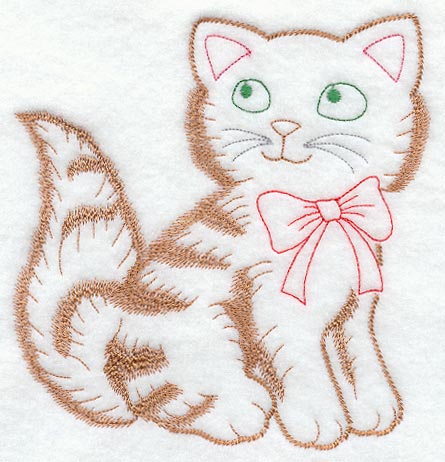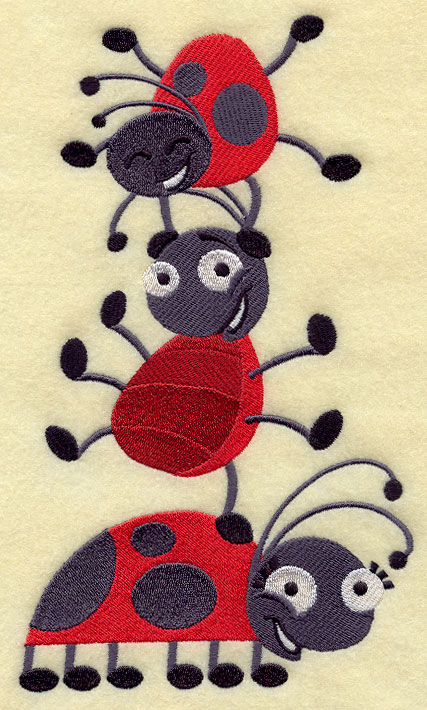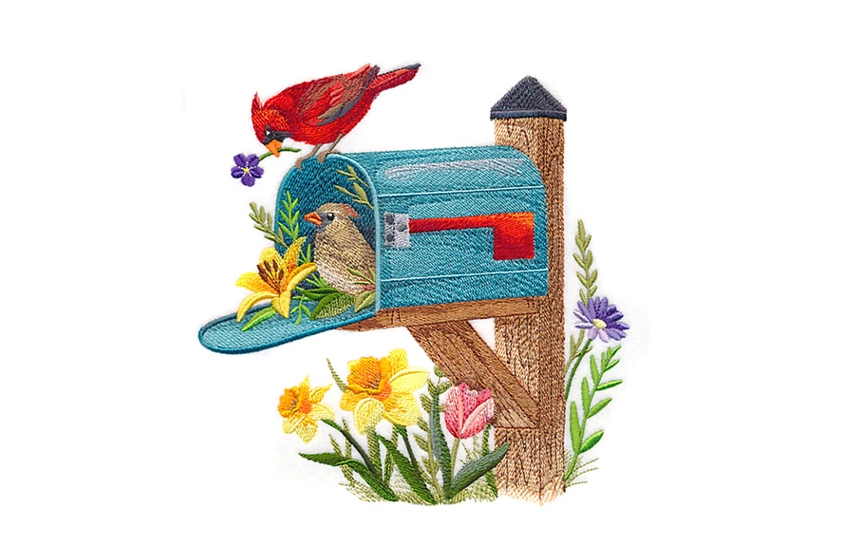Designs Used
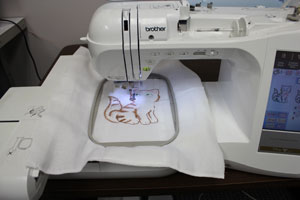
Embroidering for babies is so much fun, and embroidering cloth diapers is an especially enjoyable way to create personalized gifts to welcome a little one to the world.
Read on to find tips and tricks to embroider on cloth diapers!
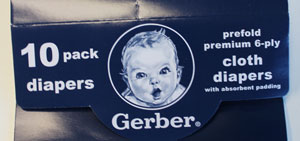
Diaper -- Prefolded or Flat Fold
I shopped for diapers at Target, and they had two kinds in stock -- prefolded and flat fold. In terms of embroidery, which one you're using can make a big difference.
The flat fold diapers are thinner and have a looser weave. The prefolded diapers have a much tighter weave, with the thick, absorbent pad in the middle.
For this article, I used prefolded diapers.
Pre-Washing Diaper
It's a good idea to wash and dry the cloth diaper before embroidering on it, in case it is going to shrink a bit.

Hooping
Cloth diapers are thicker than the "normal" type of fabric that embroiderers work with. Because cloth diapers are thick, the fabric will have a tendency to wiggle back and forth as the hoop moves.
To get the best quality results, and to avoid shifting and gapping in stitches, hoop the diaper with the stabilizer. Even though the diapers are thick, they're pliable and soft, so not difficult to hoop.

Stabilizer
I tested three types of stabilizer on the prefolded cloth diapers -- water soluble (WSS), tear-away, and medium weight cutaway.
In my tests, all three stabilizers performed well with designs of varying complexity. The Lollygagging Ladybug Stack (shown on tear-away stabilizer in the photo on the left) is the most complex design I embroidered, and it looked great when testing with all three types of stabilizer.
However, since cloth diapers are an item that will be laundered frequently, I recommend using cutaway stabilizer. That will support the fabric and the stitches during use and laundering.
If you use tear-away or water-soluble and see gapping in the stitches, or bobbin thread pulling through to the top, then switch to cutaway stabilizer. That will give excellent and reliable results.
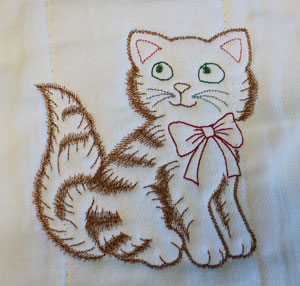
Needle Choice
I embroidered the samples with a 75/11 sharp needle. This type of needle has a finer point than an embroidery needle, and makes
crisp-looking stitches.
An embroidery needle will work well, too. However, if you're using tear-away stabilizer, be sure to use a sharp needle. That will leave the smallest perforations in the stabilizer, preserving the integrity. An embroidery needle makes larger holes, and can cause gaps in the stitching.
This example shows the Kitten Vintage design. I used cutaway backing, and a 75/11 sharp needle.
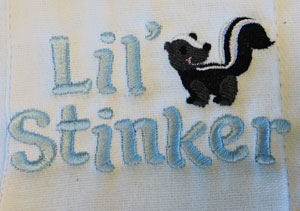
Design Choice
Choosing lighter, more open designs, and smaller designs (such as the Lil' Stinker design on the left) means fewer stitches, and less chance for leaking around the design. More stitch-filled designs can be stitched on a separate piece of fabric, then appliqued onto the diaper. See this project for instructions on this technique.

